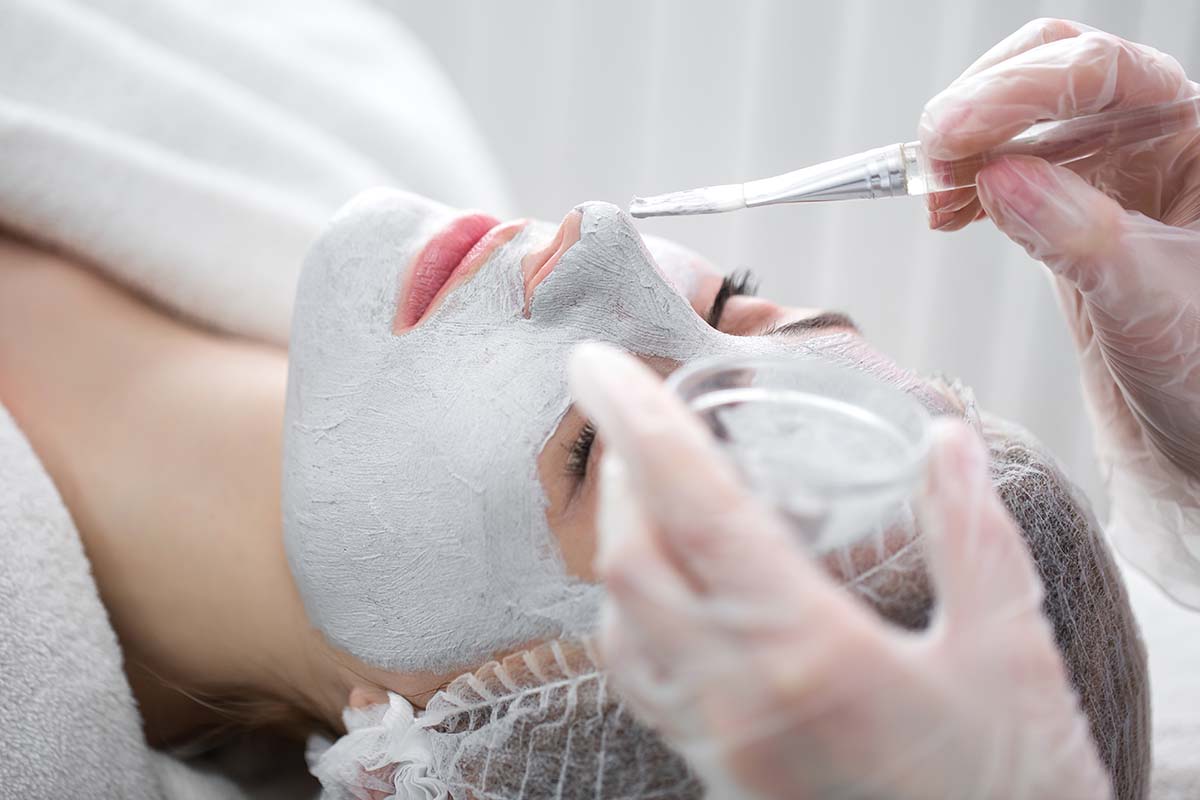Testosterone Levels by Age: What Each Age Group Should Expect
Testosterone levels are at their highest when you’re 18 and 19, but as we age, testosterone levels will start to decline. While this is only a biological factor, there are things that you can do to try and maintain a healthy level of testosterone regardless of age. A lot of testosterone-boosting techniques are associated with lifestyle changes and even a form of therapy that many men consider as they age.
Once you reach your forties, your t-levels levels will start decreasing each year between 1% and 3%. Knowing testosterone levels by age can help you to know when and how to adjust your lifestyle to maintain it better.
With the symptoms experienced with a gradual reduction in your t-levels, you’ll want to ensure you know what to do as you get older, even though this is how aging naturally works. Here’s everything you need to know about testosterone levels by age.
Late Teens and Early 20s: Feeling Invincible
Did you know that when puberty hits, the spike in testosterone production levels goes up 30-fold? Boys 12 and 13 will have anywhere from 800 ng/dL, and you will see a significant spike in boys that are 15 or 16 as they will present with a range that falls between 100 and 1,200 ng/dL. This range also increases once you hit 18 and 19, but you will notice a decline in these levels as you age.
In your 20s, you will still have a high level of testosterone, and this is typically going to be the case for most men. It isn’t uncommon for men in their 20s to report a concern about erectile dysfunction. This, however, isn’t usually due to a diminishing amount of testosterone but having less sexual experience in most cases.
In your 20s, or at least for men between 20 and 24, tertile levels will fall between 409 and 558ng/dL. For men between the ages of 25 and 29, their levels will be between 413 and 575 ng/dL. You will notice slight declines in these ranges as you get older.
Many young men wonder how they can tell if they are struggling with testosterone deficiency, and there are a few ways to tell. A few of the top ways is paying attention to any loss in body hair or if you have less facial hair.
Mood swings and delayed puberty are also significant signs to pay close attention to. In addition, young men should consider if they are experiencing high levels of fatigue and if that fatigue is persistent.
Keep in mind, though, that even if you are experiencing these things, it doesn’t mean that you have lower levels of testosterone, as a lot of these factors could resemble genetic replications. If you have concerns, it’s best to consult your primary care physician to get a better insight.
The 30s: A Time of Change
Once you enter your 30s, you may start to notice the downward shift in your t-levels. In adolescence, these levels will begin to peak, so it’s important to come to terms with the fact that you will start to experience this reduction with age. There are a few things that you can do at this point in your life that will help maintain higher levels of testosterone.
You can start by;
- Getting an adequate amount of sleep;
- Reducing stress;
- Improving your diet and sticking to it;
- Getting into strength training.
These are only a few of the many things that men can do to hold on to their testosterone levels once they enter their 30s. Another thing that you should do is to stay close to your primary care physician. Addressing any underlying medical conditions will allow you to take care of health issues before they affect your t-levels.
For example, inflammatory diseases can negatively affect t-levels, such as sarcoidosis and tuberculosis. Suppose you have any autoimmune diseases such as HIV/AIDS. In that case, you will want to ensure that you are actively taking medication to properly maintain the condition because this disease can also contribute to lower t-levels.
Overall, in your 30s, you might start to think about testosterone therapy and your general testosterone production. There is no specific age to create this type of therapy, so you should pay attention to your health and speak with a doctor if you have direct concerns.
Another thing that you will want to give up is the use of tobacco products. Alcoholic drinks, in addition to this, can contribute to a loss in testosterone. People also overlook the fact that opioid pain medications contribute to lower levels. It would be a good idea to avoid these three factors if you want to elevate your testosterone and your health in general.
The 40s: Feeling the Effects of Time
Once you’re over 40, you may show physical signs of lower t-levels. A few signs to pay close attention to are your sex drive and erectile functioning. Experiencing a reduction in sex drive and overall sexual gratification is something that can come with the development of ED so it’s important to have this assessed by a medical professional as well.
Doing this is a good option to help with regaining control over your sex life and general erectile functioning as well. Pay attention to any loss in lean muscle mass, and don’t overlook the fact that weight gain is another sign of low testosterone levels.
If you are experiencing depression and constant fatigue, these are also red flags that your forties are presenting you with testosterone problems you might not have anticipated. To achieve a higher testosterone level, start to exercise frequently and make a healthy diet a habit that you stick to. As a trick, vitamin D and other supplements are natural ways to get higher t-levels.
A few examples of supplements that act as t-level boosters are zinc, magnesium, and D-Aspartic acid. A lot of these supplement options can be found at any local drug store or supplement supply shop. Also, you should consider reducing the amount of alcohol you consume, especially if you are a frequent drinker.
The 50s: Learning More About Age-Related Testosterone Decline
Men between the ages of 50 and 54 will, on average, have t-levels that come out to 554 ng/DL. This is still considered normal since normal ranges will fluctuate between 300 and 1,000 nanograms for every deciliter. Anything below 300 is considered to be male hypogonadism.
What this is is a failure within the testes. This is basically when your gonads stop functioning as they should. This condition does require a medical diagnosis though, and it does present sexual difficulties and even the struggle of being able to conceive if you are actively trying with a partner.
If left untreated, men can experience a reduced physical strength and a complete loss of libido. This condition is more prevalent in older men. Those diagnosed with type 2 diabetes are also at a higher risk of developing this problem.
A blood test will be able to tell you your exact testosterone level. This is also the most accurate method of determining whether you have a healthy level during this age range.
Considering the Options of Therapy
Considering testosterone therapy may also be a good idea if you feel that you need it. Testosterone therapy can help men to regain their sex drive and retake their sex lives. It can also help with a few other things, such as;
- Getting and maintaining an erection;
- Getting a higher-quality erection;
- Energy improvements;
- Increase in muscle mass;
- Fat distribution;
- Maintenance of red blood cell production.
Noticing these benefits can reduce the time you have to endure the effects of ED or a diminished testosterone level. It’s important to know that diminished t-levels are a natural aging process.
While it is natural, there are ways also to stall the process and get more out of your body. T-level therapy will also help with sperm production and facial and body hair growth.
Your 60s and Beyond: What to Know About Dropping T-Levels
Men in their 60s will often have a range of testosterone between 196 and 859 ng/Dl. It’s important to know that t-levels will vary depending on the person, their lifestyle, and if they are getting active testosterone therapy or not. Body mass maintenance, however, is one of the top concerns for aging men that worry about reduced t-levels.
One of the most effective ways to combat this side effect is by taking Ostarine. You may also know the name of this drug by Enobosarm. What it is is a selective androgen receptor. It was designed to help treat the loss of muscle reduction and is a formal osteoporosis treatment.
When you form this drug regimen with your doctor, you can expect significant changes in your body mass and an improvement in lean mass in general. It’s taken orally and daily, a popular treatment among athletes. This could present a good opportunity for men in their 60s that are struggling with fluctuating muscle mass.
This also presents men with a chance to regain their health. Therapy is a good option for not only getting a healthier sex life but a healthier physical life in general.
Do Certain Things Besides Age Affect Testosterone Levels?
There are a variety of things that affect testosterone levels in men besides aging. You also have to consider your weight, your sleep schedule, and how much sleep you get. Health conditions and underlying diseases are other main factors.
For those with a consistent workout schedule or athletes, if you use or have used steroids, you are at a higher risk of diminished t-levels. People often overlook the food that they eat as well.
For example, if you have a high consumption rate of processed foods and even food made in vegetable oil, you will have a higher risk of developing health problems associated with diminished testosterone. You should also look out for certain seeds and nuts, such as flax seeds, as they are known to reduce testosterone levels.
Soy-based products and mint are no-go food options for men who want to maintain higher t-levels. If you want to do the opposite and raise your t-levels, you can eat more leafy greens and fruits like pomegranates.
Surprisingly enough, oysters are a delicious food choice, and so is fatty fish. Consider switching to different milk choices as well. This would be a smart choice because plant milk acts as a testosterone booster.
Also, it’s important to mention that injury to the testes can affect your t-levels, and while knowing testosterone levels by age is helpful, injury can happen at any age. Radiation therapies are another contributing factor, and you might not realize it, but so is climate.
If you live in colder climates, you’ll experience less testosterone than you might in hotter climates. This, of course, will vary in climate-neutral areas and will fluctuate with the weather. So, recognize that social environment is also an influencer of your t-levels.
Testosterone Levels by Age: Knowing What You Need to Remain Healthy and Satisfied
Developing a healthy lifestyle isn’t as hard as you would think. Knowing testosterone levels by age can help you prepare. It can also spare you from experiencing the negative effects that a drop in t-levels often presents.
Men that stay up to date with their health will have healthier lifestyles, sex lives, and physical comfort. Take control of your life and continue reading our content to help.
























